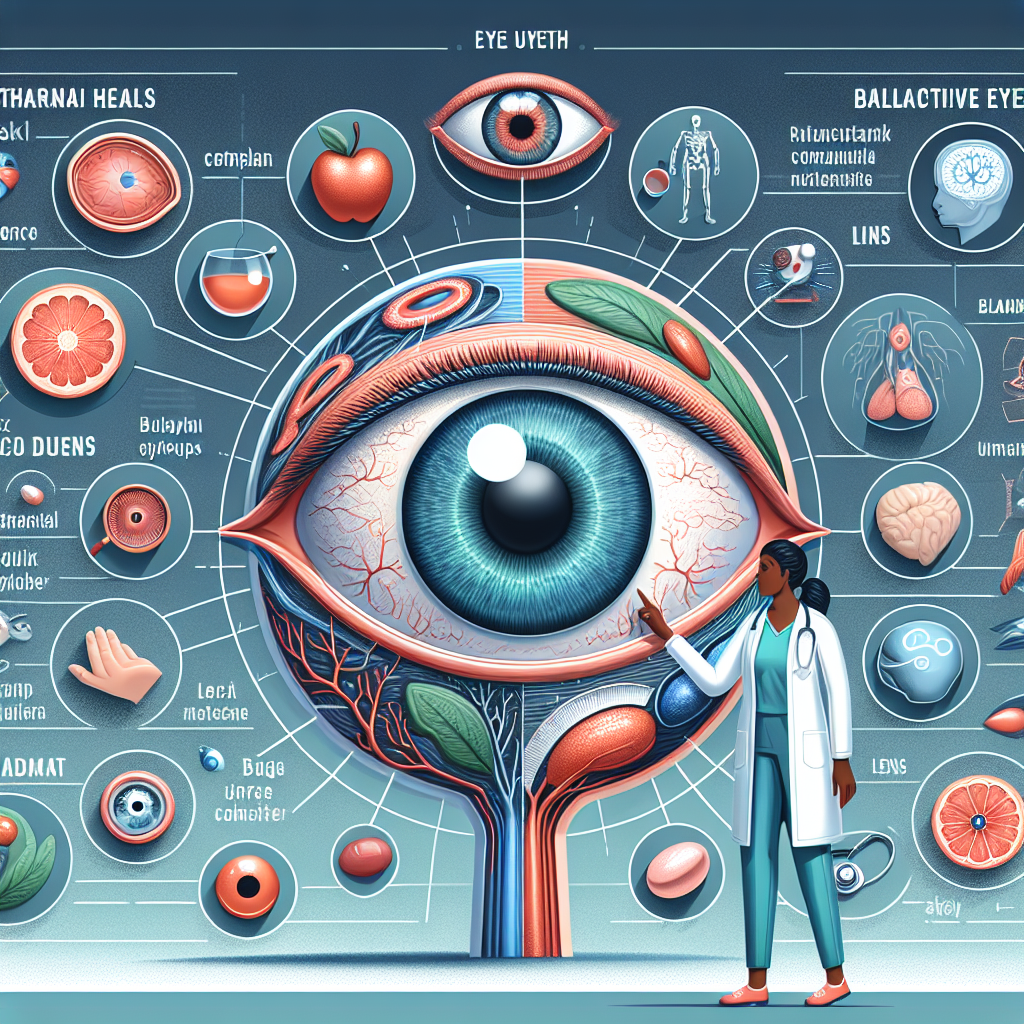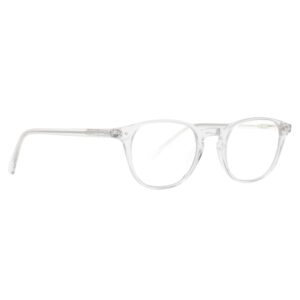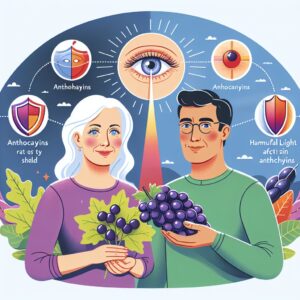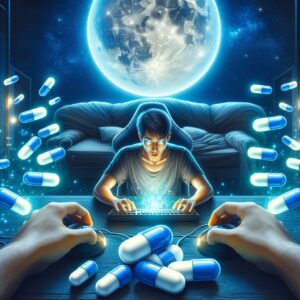
Key Takeaways
- Blue light is part of the visible light spectrum and can have both beneficial and detrimental effects on eye health.
- Excessive exposure to blue light from screens may lead to digital eye strain, but it’s not the sole cause of sleep disturbances.
- Designers can implement UI features such as dark mode and blue light filters to minimize eye strain.
- Simple daily habits, like the 20-20-20 rule, can significantly reduce the risk of eye strain.
- Educating yourself on proper lighting and workspace ergonomics is crucial for maintaining long-term eye health.
Shedding Light on Blue: UI/UX Designers’ Eye Care
When we talk about blue light and eye health, it’s essential to understand that not all light is created equal. Blue light, part of the visible light spectrum, is everywhere. It’s emitted by the sun, LED lighting, and yes, the screens of our devices. It’s not inherently bad; in fact, it’s necessary for regulating our sleep-wake cycles. However, too much exposure, especially at the wrong times, can be problematic. That’s where you, as a designer, come into play. Your design choices can influence how users interact with screens and how much blue light they’re exposed to.
Source and Impact of Blue Light
Blue light has a short wavelength, which means it’s high-energy. During the day, it boosts attention, reaction times, and mood. Sounds great, right? But at night, it can throw off our body’s internal clock, the circadian rhythm. This disruption can make it harder to fall asleep and can lead to sleepless nights and tired mornings. And there’s more: staring at screens for long periods can cause digital eye strain, leading to dry eyes, irritation, and difficulty focusing.
Practical Tips for Reducing Exposure
So, what can we do about it? Let’s start with the basics:
- Limit screen time: Encourage breaks. No one should be glued to their screen for hours on end.
- Use ambient lighting: Design workspaces with lighting that’s easy on the eyes, reducing glare and harsh contrasts.
- Advocate for regular eye exams: Remind users to get their vision checked. An ounce of prevention is worth a pound of cure.
Now, let’s get into the nitty-gritty of UI/UX design and how it plays a role in eye health.
Decoding Blue Light: What Every Designer Should Know
As designers, you’re not just artists; you’re also gatekeepers of user health. The choices you make in color schemes, brightness, and contrast can all influence how much blue light reaches the user’s eyes.
Understanding the Spectrum
Blue light is part of a spectrum that includes red, orange, yellow, green, and violet light – each with different energies and wavelengths. Blue light is on one end, with the highest energy and shortest wavelength, making it potentially more damaging than its lower-energy counterparts.
Blue Light: Friend or Foe?
It’s not all doom and gloom. Blue light isn’t a villain. During the day, it’s beneficial. It helps us stay awake and alert. But too much exposure, especially before bedtime, can affect our sleep quality. That’s why balance is key, and as designers, you have the power to help strike that balance.
The Role of Dark Mode and Filter Tools
Enter dark mode and blue light filters – they’re not just trendy; they’re eye savers. Dark mode reduces the overall screen brightness, cutting down on the amount of blue light emitted. It’s easier on the eyes, especially in low-light conditions. Blue light filters, on the other hand, adjust the screen’s color temperature, reducing blue light emission without compromising visibility. Most importantly, these tools are in your control as a designer. You can design apps and websites that default to dark mode during evening hours or offer user-friendly settings for blue light filtration.
Toolkit for Protecting Your Eyes
Your eyes are your most valuable tools. To protect them, you’ve got to be proactive. Besides software solutions, there are physical tools at your disposal. Let’s talk about them.
Eyewear Innovations
- Blue light blocking glasses: They have special lenses that filter out blue light. You can wear them whenever you’re using screens.
- Photochromic lenses: These smart lenses darken in response to bright light, including blue light, offering protection indoors and out.
These innovations can help minimize the harmful effects of blue light, but remember, they’re just part of the solution. It’s still important to manage your screen time and take regular breaks.
Let’s not forget, your screen’s settings can also make a big difference. Adjusting the brightness to match your environment prevents your eyes from working overtime. The same goes for contrast – high contrast settings can make it easier to read without straining your eyes. And if your device has a night mode, use it. It’s there for a reason.
Screen Settings for Safer Viewing
Did you know that the default settings on your screen might not be ideal for your eyes? It’s true. Here’s what you can do:
- Adjust the brightness so it’s not too much brighter than your surroundings.
- Use high contrast settings for text and background to reduce eye strain.
- Enable night mode or blue light filters on your devices in the evenings.
Daily Habits for Long-Term Eye Health
Now, let’s talk daily habits. These are the small changes you can make every day to keep your eyes feeling fresh and focused.
Blink Breaks: The 20-20-20 Rule
Every 20 minutes, look at something 20 feet away for 20 seconds. It’s that simple. This mini-break gives your eyes a chance to reset and reduces the risk of strain. So set a timer, stick a post-it on your monitor, do whatever it takes to remember to take those blink breaks.
Optimizing Workspace Lighting
Besides that, let’s talk about lighting. Harsh overhead lighting or glare from windows can cause eye strain. Use blinds or shades to control natural light and choose softer, diffused lighting for your workspace. It makes a world of difference.
Bringing Health into Focus: Lifestyle Adjustments
Eye health goes beyond just what’s on your screen. It’s about how you live your life. Getting enough sleep, staying hydrated, and eating a diet rich in omega-3s and vitamins can help maintain your eye health. So, remember to look after your whole body – your eyes will thank you.
And exercise isn’t just good for your heart; it’s good for your eyes too. Regular physical activity can increase blood flow to the optic nerve and retina, which is vital for good vision.
For example, an analysis of the National Health and Nutrition Examination Survey suggested that exercise may be associated with a decreased risk of developing glaucoma, a disease affecting the optic nerve.
Finally, let’s not overlook the importance of a well-balanced diet. Foods rich in antioxidants, like leafy greens and berries, can protect your eyes from harmful light waves. So next time you’re planning a meal, think about your eyes too.
Dietary Considerations for Eye Health
Speaking of diet, here are some eye-friendly foods to include in your meals:
- Leafy greens like spinach and kale, packed with lutein and zeaxanthin.
- Fish high in omega-3 fatty acids, such as salmon and mackerel.
- Colorful fruits and veggies, such as carrots, sweet potatoes, and blueberries.
These foods aren’t just tasty; they’re full of the nutrients your eyes need to stay healthy. So, make them a regular part of your diet, and your eyes will reap the benefits.
Physical Exercises for Visual Vitality
Physical activity is crucial, not just for overall health, but specifically for our eyes. An active lifestyle can help reduce the risk of conditions like diabetes, which can lead to vision problems. Simple exercises like walking can improve blood circulation, which is beneficial for eye health. For those of us spending hours in front of screens, eye exercises can also be a game-changer. Try palming, where you warm your hands by rubbing them together and then gently placing them over your closed eyes. It’s a great way to relax your eye muscles.
FAQ
How does blue light affect sleep patterns?
Blue light can significantly impact our sleep patterns because it affects the production of melatonin, the hormone that tells our body it’s time to sleep. Exposure to blue light, especially in the hours leading up to bedtime, can trick our brains into thinking it’s still daytime, making it harder to wind down and fall asleep. That’s why it’s recommended to reduce screen time before bed or use blue light filters in the evening.
Are blue light filtering glasses necessary for all designers?
While not every designer may need blue light filtering glasses, they can be a valuable tool for those who spend extensive periods in front of screens. If you’re experiencing symptoms like eye strain, headaches, or disrupted sleep patterns, these glasses may help alleviate those issues. However, it’s essential to combine their use with other eye health practices, like taking regular breaks and optimizing screen settings.
What are the signs of blue light related eye strain?
Eye strain from blue light exposure can manifest in several ways, including dry eyes, irritation, redness, blurred vision, difficulty focusing, and headaches. If you’re experiencing these symptoms regularly, it might be time to evaluate your screen habits and make some changes to your digital environment.
Can altering UI color schemes help reduce eye strain?
Yes, altering UI color schemes can play a significant role in reducing eye strain. Designing with soothing color palettes, reducing the amount of bright white backgrounds, and incorporating dark mode options can all help lessen the amount of blue light that users are exposed to, leading to a more comfortable viewing experience.
What’s more effective: Blue light software or manual display adjustments?
Both blue light software and manual display adjustments have their benefits, and their effectiveness can vary from person to person. Blue light software is convenient and often adjusts based on the time of day, which can be helpful for maintaining natural sleep patterns. Manual adjustments allow for more personalized control, letting you tweak settings to your comfort level. The best approach is to use a combination of both, adjusting manually when needed and utilizing software as a baseline protection.


